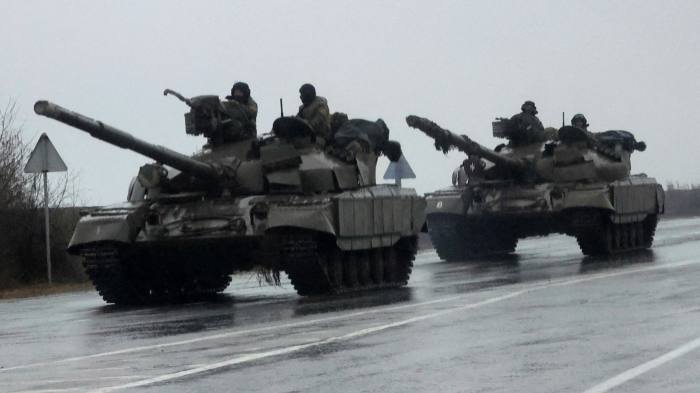Ukrainian President Volodymyr Zelensky has imposed martial law in the country in response to Russian invasion.
President Volodymyr Zelensky of Ukraine declared martial law in the country because of the Russian invasion.
— The New York Times (@nytimes) February 24, 2022
Speaking in a TV address on Thursday morning, he did not clarify what restrictions would be in place. https://t.co/fGQ0BExS5r pic.twitter.com/9SFvnle5GX
President Zelensky said to his people “not to panic and be strong”.
“Today each of you should keep calm. Stay at home if you can. We are working. The army is working. The whole sector of defense and security is working”, the Ukrainian president added.
Andrew Simmons, Al Jazeera’s reporter, revealed, “The whole sky was awash with red and orange when these missiles struck – some of which were apparently cruise missiles. And the main international airport did come under attack – it is not clear what the damage is there, but all air space is closed.”
Explosions sounded as Al Jazeera’s @simmjazeera reported live from Ukraine’s capital Kyiv, after Russia's Putin announced military action in the Donbas region ⤵️ pic.twitter.com/bk9ylfv4Ym
— Al Jazeera English (@AJEnglish) February 24, 2022
As per Zelensky’s Twitter account, several nations are in contact with Ukraine. In a tweet, he noted that “the world is with us”.
I continue negotiations with the leaders. Received support from the Emir of Qatar @TamimBinHamad. The world is with us.
— Володимир Зеленський (@ZelenskyyUa) February 24, 2022
Prior to this, Donetsk and Luhansk — collectively known as Donbas — was recognised by Russia as separate nations. The region consists of separatists and is pro-Russia.
Background:
The history goes back to 1991 when the Union of Soviet Socialist Republics (USSR) disintegrated, resulting in the independence of Ukraine. It was the Ukrainian revolution when things got out of hand, Russian-favoured former President Viktor Yanukovych was ousted by popular protests and his own parliament in February 2014. He fled to Russia, where he is living in exile. Later, a new government was formed, which had United States (US) favour.
This all led to a conflict in eastern Ukraine that began in April 2014 with low-level fighting between the Ukrainian military and Russian-backed separatist rebels in Donbas who seized some towns in predominantly Russian-speaking eastern Ukraine. For the time being, a ceasefire was signed between the two parties.
Last year, there were speculations that Ukraine is making progress toward gaining North Atlantic Treaty Organization (NATO) membership. However, NATO has always denied this. Russia argued that western military presence represents an existential threat to Russia.
Since then, Russia has been sending its troops towards the Ukrainian border. The estimated number of Russian troops deployed in and around Ukraine has ranged from 100,000 to 190,000 in recent weeks.
According to the New York Times, there are both geopolitical and historical reasons behind Moscow’s endless pressure on Kyiv, which was the birthplace of the first Russian state in the 9th Century. The Russian language is still widely spoken in the country despite Ukraine’s own language.
It is pertinent to mention that Ukraine is the European Union’s (EU) fourth-biggest external food supplier. It provides the bloc with about a quarter of its cereal and vegetable oil imports, including almost half of its corn.
According to the UN’s Food and Agriculture Organization (FAO), global food prices reached a 10-year record in 2021 and the war would only make that a lot worse.







